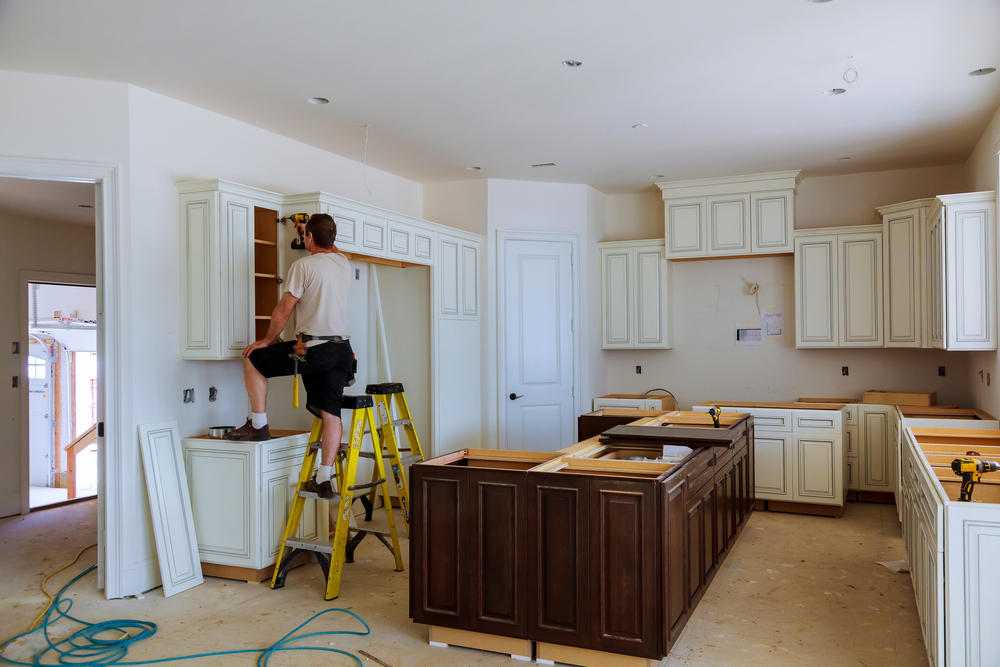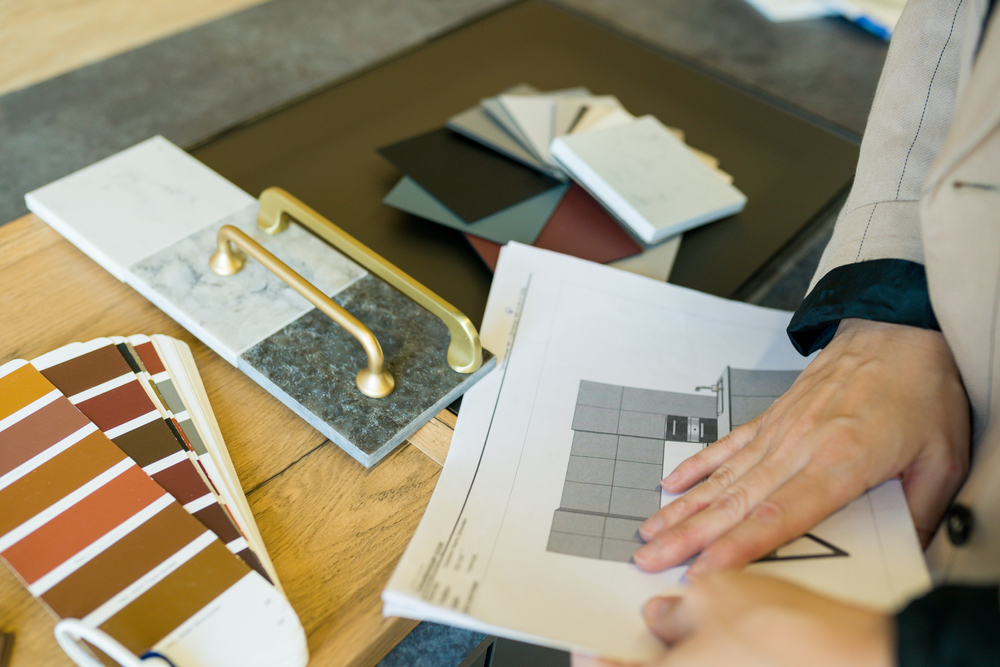
Change is good for people and homes, especially when that change is synonymous with an elegant kitchen renovation. A stylish kitchen oozes charm and personality. It is no wonder that kitchens were the most renovated interior spaces of 2021, with property owners spending an average of $15,000 for an upgrade.
The ideal kitchen you have conjured up in your mind is a dream, but perhaps realising it is a nightmare. Don’t worry; it doesn’t have to be. This guide will fill you in on every aspect of your kitchen renovation—from planning to execution—so you feel optimistic about taking the leap.
Need and Goal Assessment
Defining Your Objectives
Every project needs a reason and a goal, especially when large reserves of time, money, and energy are involved. So, ask yourself why you want to renovate your kitchen. Among the list of possible reasons, you might want to:
- Update the design
- Increase the energy-efficiency
- Amplify your storage
- Add value to your home
When you are clear about your purpose, you can refine your renovation plans accordingly.
Analysing Your Lifestyle
You need a kitchen that eases your daily routine. If you enjoy whipping up elaborate meals and smoothies or hosting friends and relatives, consider including a larger countertop space, a functional island, or an open layout for easy socialising.
Budgeting and Planning
A luxury kitchen that exists in your mind costs nothing, but a kitchen in the real world requires big bucks. A realistic approach from the outset is best because it fends off disappointment. Perform a need vs want analysis to strike off unnecessary elements. (Pro tip: Needs over wants—always.) Research kitchen renovation experts
and their prices in your area and deliberate whether you need to expand or reduce your budget.
Designing Your Dream Kitchen

Layout and Flow
A good kitchen doesn’t just look pretty; it makes your life easier by preventing bumps, slips, falls, and pandemonium. Consider these common layouts:
- U-shaped. The cabinets and countertops form a ‘U’ shape.
- L-shaped. The cabinets and appliances are arranged along two adjacent walls in the shape of an ‘L.’
- Your kitchen will have parallel countertops and cabinets along two walls, creating a corridor-like design.
Implement these ergonomic design principles to elevate your experience:
- Work triangle
- Task-based countertop heights
- Unobstructed aisles
- Functional zones
- Well-distributed lighting
- Storage accessibility
- Proper ventilation
- Accident-proofing
- Comfortable seating
Cabinetry and Storage Solutions
There’s nothing better than having everything in its proper place in your kitchen. Storage options like shelves can demonstrate your impeccable organisation, but drawers and cabinets can hide the clutter if that’s not your strong suit.Some consideration-worthy kitchen cabinet styles include:
- Shaker. A five-piece door with a flat centre panel.
- Flat panel. A sleek, unadorned ‘slab’ cabinet.
- Inset. A cabinet with inbuilt doors and drawers.
- Glass-front.Glass-panelled cabinets for openness or showcasing.
- Open shelving. A column of uncovered horizontal surfaces.
- Solid wood
- Plywood
- Medium Density Fibreboard (MDF)
- Particleboard
- Thermofoil
- Metal
- Melamine
- Bamboo
Countertops and Surfaces
As one of the most prominent elements of your kitchen, your countertop deserves a good deal of deliberation. Will your countertops be the focal points of the kitchen? Are you choosing other elements and materials based on the specifics of the countertops, or is it the other way around?So, what’s your countertop style going to be?
- Solid surface
- Granite
- Quartz
- Marble
- Laminate
- Concrete
- Butcher block
- Stainless steel
- Soapstone
- Wood
- Tile
Appliances and Fixtures
When you upgrade to energy-efficient appliances, it’s a win-win for you and the environment. The numbers on your energy bill won’t fill you with dread, you will reduce your carbon footprint, and you won’t have to say premature goodbyes to your fridge, oven, or dishwasher.Fixtures are smaller but just as important as the big guys. Consider these fixtures for your kitchen makeover:
- Multiset sink faucets
- Overhead and task lighting
- Cabinet hardware
- Island pendant lights
- Under-cabinet lighting
Selecting Materials and Finishes

Flooring Options
Your kitchen floor is usually the first point of visual and physical contact. You might want to work from the bottom up (literally) when brainstorming your kitchen’s appearance because flooring grounds the space’s aesthetic and frames every other element together with the walls.What makes a good kitchen floor?
- Durability
- Water-resistance
- Ease of maintenance
- Underfoot comfort
- Slip-resistance
- Compatibility
Give these materials a thought:
- Tile
- Vinyl
- Hardwood
- Laminate
- Cork
- Stone
Backsplash and Wall Finishes
The walls behind your sink, stove, and countertops are prone to splashes, stains, and moisture. Backsplash protects the walls and adds visual interest through colour, texture, and patterns.Take your pick from among these backsplash materials:
- Tile
- Glass
- Mosaic
- Metal
- Brick
- Stone
- Wood
- Peel-and-stick
- Concrete
Navigating the Renovation Process
Here’s a simple but thorough breakdown of the professional kitchen renovation process.Preparation
- The contractors clear the kitchen.
- They set up a temporary kitchen in another part of your home.
- They protect adjacent areas from dust and debris.
Demolition and Construction
- The experts remove old cabinets, countertops, and fixtures.
- They address structural changes or repairs.
- They dispose of the debris.
- They install new electrical and plumbing components.
- They lay the foundation for new flooring.
Installation and Finishing Touches
- The specialists install new cabinets.
- They place countertops.
- They integrate appliances and fixtures.
- They add cabinet hardware, backsplash, and lighting.
Testing and Quality Control
- The contractors test the appliances.
- They check plumbing and electricity connections.
- They ensure that safety measures and building codes are met.
Final Walkthrough and Handover
- The experts address any residual concerns.
- They review warranties and care instructions.
- They give you documentation, permits, and certificates for the renovation.
- You make the final payment upon satisfactory completion.
Conclusion
‘Boring and bleh’ or ‘drab and dreary’ are not descriptions your kitchen deserves. The only adjectives that should come to mind when you enter your culinary space are ‘elevated,’ ‘elegant,’ and ‘exquisite.’ The transformation begins with thoughtful, detailed planning and research and culminates in a culinary heaven. Enjoy the process and the result of your kitchen renovation!





